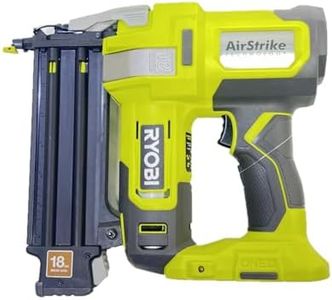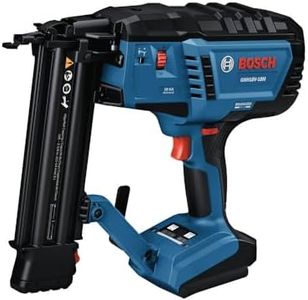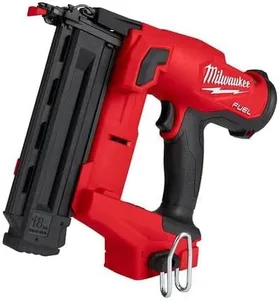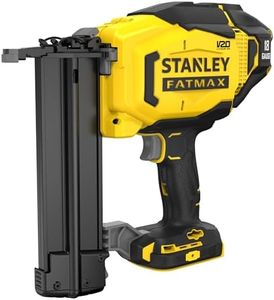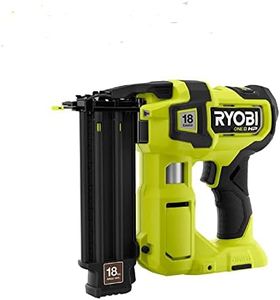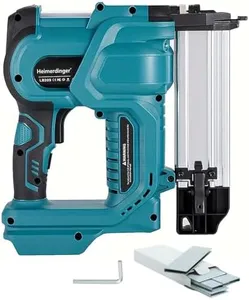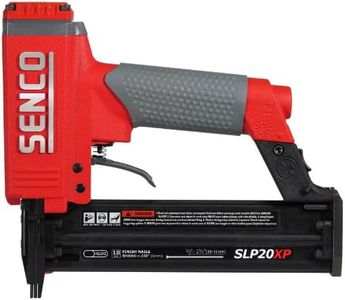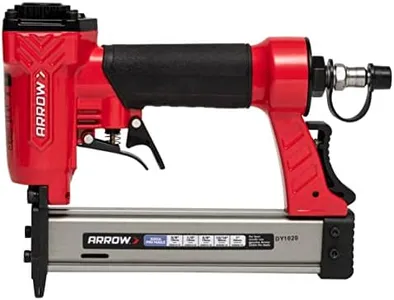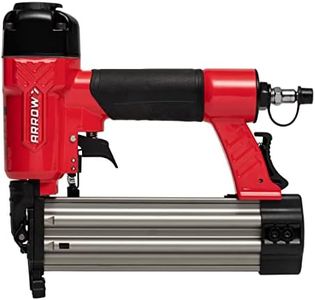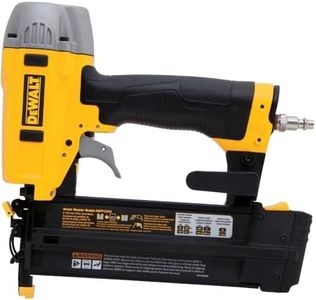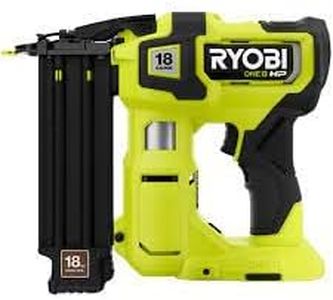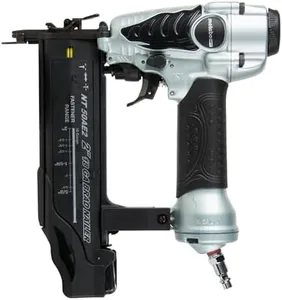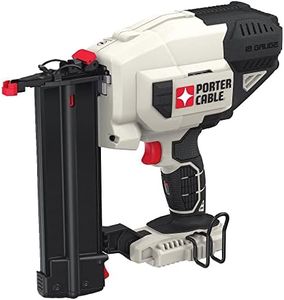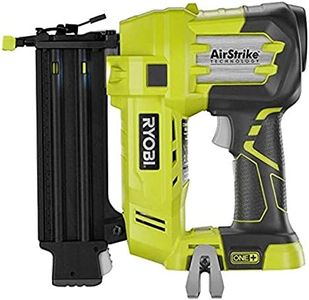We Use CookiesWe use cookies to enhance the security, performance,
functionality and for analytical and promotional activities. By continuing to browse this site you
are agreeing to our privacy policy
10 Best 18 Gauge Brad Nailers
From leading brands and best sellers available on the web.Buying Guide for the Best 18 Gauge Brad Nailers
When selecting an 18-gauge brad nailer, it's important to consider how and where you'll be using the tool. Whether you're a hobbyist, DIY enthusiast, or a professional woodworker, matching the features of the nailer to your typical projects will ensure both efficiency and comfort. Consider the types of materials you'll work with, the duration of typical tasks, and how much versatility you need. This way, you can choose a brad nailer that not only tackles your current jobs but also supports future projects.Power SourceThe power source of an 18-gauge brad nailer determines how the tool operates—either using pneumatic (air compressor) power, battery (cordless), or sometimes electric corded. Pneumatic nailers are generally lighter since the motor is external, and they offer consistent power, making them great for workshop use. Battery-powered models deliver mobility and are ideal for job sites or situations without unlimited access to compressed air or outlets, though they can be heavier due to the battery. Electric corded models combine consistent power with plug-and-play convenience but might be less portable. Choose a power source that fits where you most often work and how much mobility you need.
Nail Length CompatibilityNail length compatibility refers to the range of brad nail sizes the tool can handle, usually from about 5/8-inch up to 2 inches. Shorter nails are ideal for delicate trim and thin materials, while longer nails offer more holding strength for thicker woods or connecting materials. If you tend to work on small crafts or light trim, a unit supporting shorter nails may suffice, but for furniture or more substantial woodworking, pick a nailer that accommodates a wider range, especially longer brads.
Magazine CapacityMagazine capacity indicates how many brad nails the tool can hold at once before needing to be reloaded. A higher capacity means longer intervals between reloads, which can boost productivity during bigger projects. Lower capacities can be perfectly fine for occasional users or small jobs. If you're working on lengthy tasks or don’t want to stop frequently, look for a nailer with a larger magazine to minimize downtime.
Tool Weight and ErgonomicsThe weight and ergonomic design of a brad nailer affect comfort, especially during extended use. Heavier models can cause hand fatigue, while well-designed grips and balanced weight make the tool easier to handle and control. For long projects or if you have smaller hands, lightweight and ergonomic models will minimize strain. Test how the tool feels in your hand or check for features like soft grips to ensure it suits your needs.
Depth AdjustmentDepth adjustment lets you control how deep the nail is driven into the material. This is important because different woods and project types might require nails to sit flush, slightly countersunk, or protruding a little. Tools with easy or tool-free depth adjustment allow flexibility and cleaner finishes across multiple materials without switching devices. If you often switch between hard and soft woods or care about finish, prioritize an easy-to-use depth adjustment.
Jam Clearing MechanismJamming can happen with brad nailers, so having an accessible and tool-free jam clearing mechanism helps you quickly resolve blockages. This saves time and reduces frustration during busy projects. If you value uptime and efficiency or have less technical experience, look for a model that provides easy jam clearing.
Trigger Type (Sequential vs Bump-Fire)Trigger type determines how nails are fired: sequential triggers require pulling the trigger for each nail, which prioritizes safety and control, while bump-fire (contact) allows firing multiple nails rapidly by pressing the tool against the workpiece. If you prefer accuracy and safety, sequential trigger models are best; for high-speed nailing on big projects, bump-fire might be more efficient. Some tools offer both options, letting you switch as needed.
